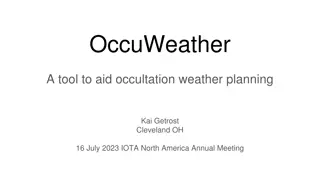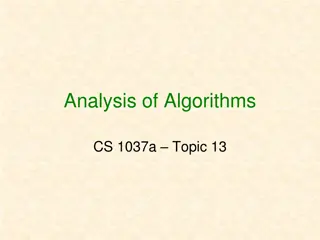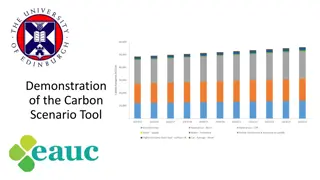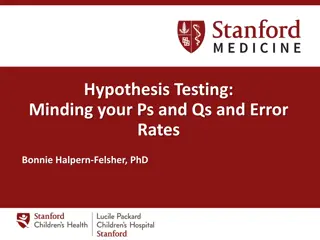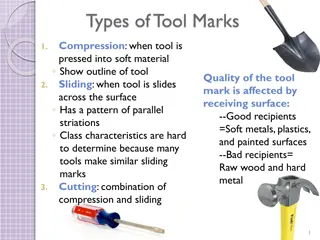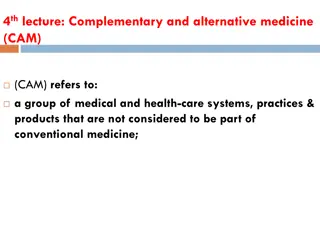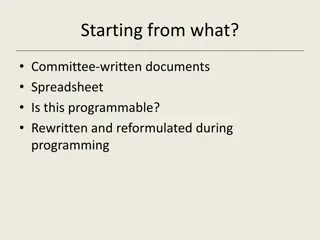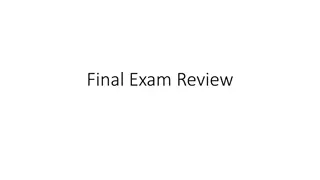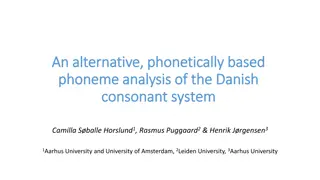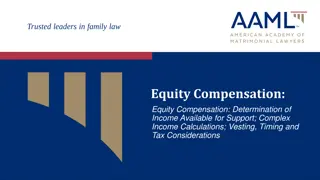AOTAsteroidal Occultation Time Analyser: Alternative Tool for Asteroidal Occultation Analysis
Create an alternative tool for analyzing asteroidal occultation light curves independently, focusing on D and R events. The methodology involves integrity checks, fitting test light curves, and applying camera-based corrections. Manual time stamp setting, calculating time stamps, and integrity checks are crucial steps in the analysis process. Check for systematic problems using Fourier Analysis plots and set integration parameters for accurate analysis.
Download Presentation

Please find below an Image/Link to download the presentation.
The content on the website is provided AS IS for your information and personal use only. It may not be sold, licensed, or shared on other websites without obtaining consent from the author.If you encounter any issues during the download, it is possible that the publisher has removed the file from their server.
You are allowed to download the files provided on this website for personal or commercial use, subject to the condition that they are used lawfully. All files are the property of their respective owners.
The content on the website is provided AS IS for your information and personal use only. It may not be sold, licensed, or shared on other websites without obtaining consent from the author.
E N D
Presentation Transcript
AOTA Asteroidal Occultation Time Analyser
Aim Create an alternative tool to analyse asteroidal occultation light curves Focus on measuring the D and R events independently Handle Limovie & Tangra files Handle output from integrating cameras Clear presentation of what is going on User friendliness & simplicity as much as possible! 4
Basic methodology Integrity check, for timing inconsistencies Putative events identified using cross-correlation analysis D and R events analysed by fitting a test light curve of varying transition duration, using a 2 best fit analysis Uncertainties determined using a Monte Carlo analysis, with noise applied to the test light curve Apply camera-based corrections to the times 5
If start and end time stamps, can fill with calculated rate. But treat with care 7
Integrity Check Highly desirable to have OCR reading of time stamp Looks for irregularities in time stamp sequence, and for identity in sequential measurements For integrating cameras, checks that the recorded #frames in each integration interval is constant 8
Can check for systematic problems with a Fourier Analysis plot Good Bad 10
Event identification Test signal extends for the entire recording duration Sets a minimum cross-correlation level for a possible event Look for symmetric triangle, straight sides, sharp apex, peak above orange region at bottom, and light curve flat across the bottom. 12
Symmetric triangle with straight sides, sharp apex, flat light curve at bottom (see 5 orange bars) 13
Cloud event asymmetric, non-straight sides, no sharp apex, light curve at bottom not flat (see orange bars) 14
Can overlay comparison stars Note how the green line drops at the same time as the cloud event, but not for the occultation 15
Can identify up to 5 putative events Each event can be separately analysed 16
Final plot showing fitted light curve and uncertainties 17
Some events have two discrete possibilities Dunham-Agamemnon 18
Accuracy visible via 2 curves Well-defined event Small uncertainty on the - side, large on the + side Poorly-defined event 19
True gradual events have a rise and fall in the plot of 2 20
Can view/save measurement report AOTA analysis of the file D:\Videos\ofOthers\Metis\20140307-Metis_Pierrefontaines.csv - analysed on Wednesday, 26 March 2014 at 3:29 AM UTC - using AOTA v4.1.0.27 Event #1 Event location in video frame ID's D: 601.0 +1.0/-0.5 R: 914.0 +0.5/-0.5 Event time in UTC D: 3 8 19.40 0.03 R: 3 8 31.92 0.02 Duration of transition in frames D: 0 R: 0 SN at event locations D: 3.0 R: 3.3 ===== Camera details ===== Camera : WAT-910BD Frames integrated : 0 Video system : PAL ==== Measurement info ==== Measurement tool : Limovie Measured at Field level: False # Measurements binned : 1 Normalisation : None Time scale from tool : False ===== end of report ====== 23
Detailed Help file provided, with step-by-step instructions and guidance on interpretation 25
Questions? 26


